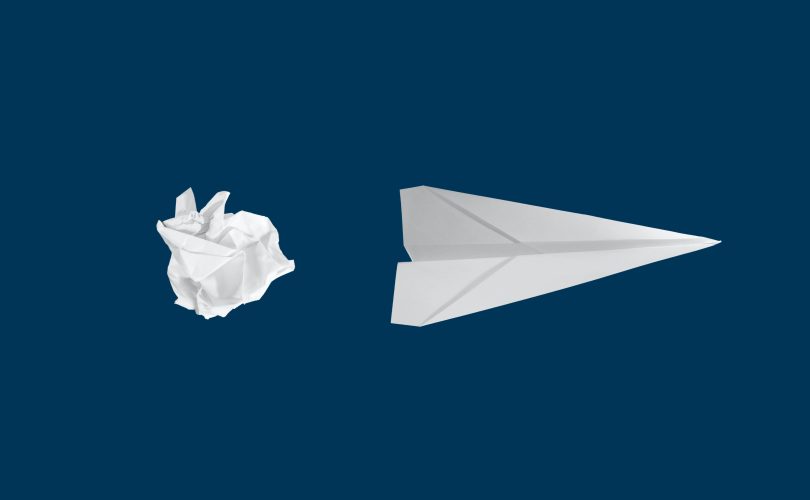In 1932 in a remote town in Denmark, called Bellund, a carpenter called Ole Kirk Christiansen existed. When his son accidentally set his workshop on fire, he found it in himself to reinvent his furniture business into the toys business. Another couple of fires, depression and a World War meant the odds of success were stacked against him. Undaunted, his constant need to reimagine and innovate led him to buy the first plastic moulding machine in Denmark and produce a set of plastic toys.
And then the wonder of interlocking a whole system connecting his imagination and toys began to fall in place. People said he was crazy because kids only played with wooden toys. Shopkeepers scoffed at the idea and his own brothers refused to loan him money. But he was convinced that Leg Godt, or “play well” was an idea whose time had come. A brand that he later called LEGO.
In birthing the company and the brand, Ole had given it its DNA – innovation, joy and resilience.
A trait that passed through generations. For the next 70 years, the company saw growth and profit. It was unassailable in its leadership and quietly began dominating the world.
But then in 2003, the company suddenly realised it was running out of cash. It had lost over $300 Mn that year and was burning cash every month. Interestingly this was after 10 years of accelerated innovation, movie tie-ups, TV shows, instant toys… the brand had courageously invested in whatever seemed to be emerging in the kids-experience landscape.
Analysts accused LEGO of reckless over innovation. Customers had been ambivalent to this radical new avatar of the brand. Sales had not moved and costs had gone through the roof.
Has LEGO moved too far beyond its core proposition? Had the spirit of innovation that had made LEGO, almost destroyed it?
Kjeld Kirk Christiansen, the new CEO was under pressure to take less risk and think about a survival strategy. But when faced with this disastrous situation, he declared that the company would double down on its core strength – customer-led innovation. That was the LEGO way. However successful innovation needed a system of learning and iteration. It needed to be delivered as a system across the company for the brand’s value proposition to come alive – licensing, product, supply, partners, distribution and marketing.
Kjeld made experimentation and profitable innovation a cultural virtue – a system.
- The company removed unnecessary unprofitable choices.
- Kjeld asked fundamental questions, “Who are we? How do we win?” And encouraged his team to look for growth opportunities that were aligned with this core – get more girls involved with LEGO toys, make the sets more intricate, bring in motors and imagination – ask the question, how do we stay relevant? Not how others do or will.
- He encouraged ideas from consumers. He co-opted them as co-creators with LEGO. A radical, innovative idea to build ownership, particularly from children.
- He created a system of rapid prototyping and testing.
- As a simple rule of thumb, he followed what he called the wisdom of the crowd.
Kjeld looked for the blue ocean, he thrived on the new – but did not waver from his system of learning and innovation – profitably.
The company turned around. LEGO is the world’s biggest toy company in the world, with a market value exceeding US $9 billion and seven toy brick sets passing through the world’s checkouts every single second – that’s 600,000 every day. In 2021, a group of international business researchers found that investing in LEGO was more lucrative than gold, stocks, art or wine. Analysts refer to LEGO as the Apple of Toys. And the system continues to thrive.
LEGO’s steadfast belief in continuously learning, experimenting and reinventing, speaks to our research on the attributes that make businesses thrive and be resilient in the face of chaos and complexity. Two of these attributes shine through in this story.
Learning & Agility – Where the organisation prioritises the cycle of learning-experimenting-learning as a way of playing to its potential. The readiness of the organisation to respond, learn and adapt to changing circumstances, internally and externally.
Positivity – The ability to come from hope and optimism and be anchored in resilience through challenging times.
If you’re curious about how your organisation, teams and leaders can thrive – do reach out for a chat.








Excellent article. Keep posting such kind of information on your page.
Im really impressed by it.
Hi there, You’ve performed an excellent job. I’ll certainly
digg it and in my opinion suggest to my friends. I am
confident they will be benefited from this website.